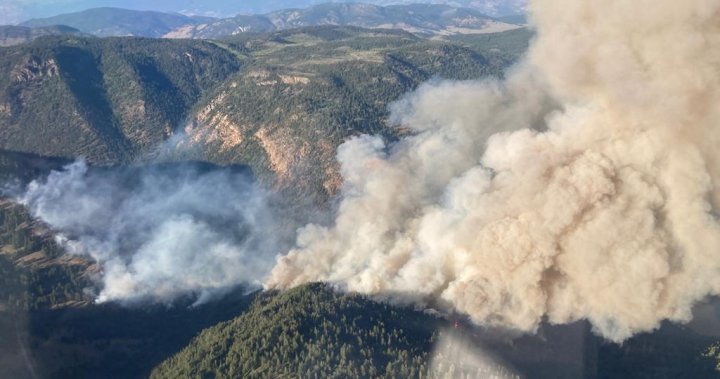
Unpredictable winds, topography complicating wildfire response, experts say
Global News
In British Columbia, shifting wind patterns have been a key concern for crews battling a fire in the south Okanagan that has forced the evacuation of hundreds of homes.
Hot weather and dry conditions are the usual suspects in any wildfire season, but a complex interplay of topography and unpredictable winds can create particularly challenging adversaries for firefighters, experts say.
In British Columbia, shifting wind patterns have been a key concern for crews battling a fire in the south Okanagan that has forced the evacuation of hundreds of homes.
Mary-Ann Jenkins, professor emeritus of atmospheric science at York University in Toronto, said fire generally moves in the same direction the wind is blowing.
But mountains can complicate matters, she said.
The Rockies, for instance, influence a range of factors, including humidity and localized wind directions.
“Because of the Rockies, wind can be channelled through valleys. It changes _ the wind over ridges in the mountains and also sometimes you have very severe downslope winds,” she said.
“And another thing that people don’t know is that winds going up a hill tend to accelerate. As they go uphill, they get stronger and stronger before they reach the top.”
Jenkins said the Rockies create a unique phenomenon called Chinook winds, which are extremely drying, can be experienced all year around and can add to firefighting woes.

 Run 3 Space | Play Space Running Game
Run 3 Space | Play Space Running Game Traffic Jam 3D | Online Racing Game
Traffic Jam 3D | Online Racing Game Duck Hunt | Play Old Classic Game
Duck Hunt | Play Old Classic Game











